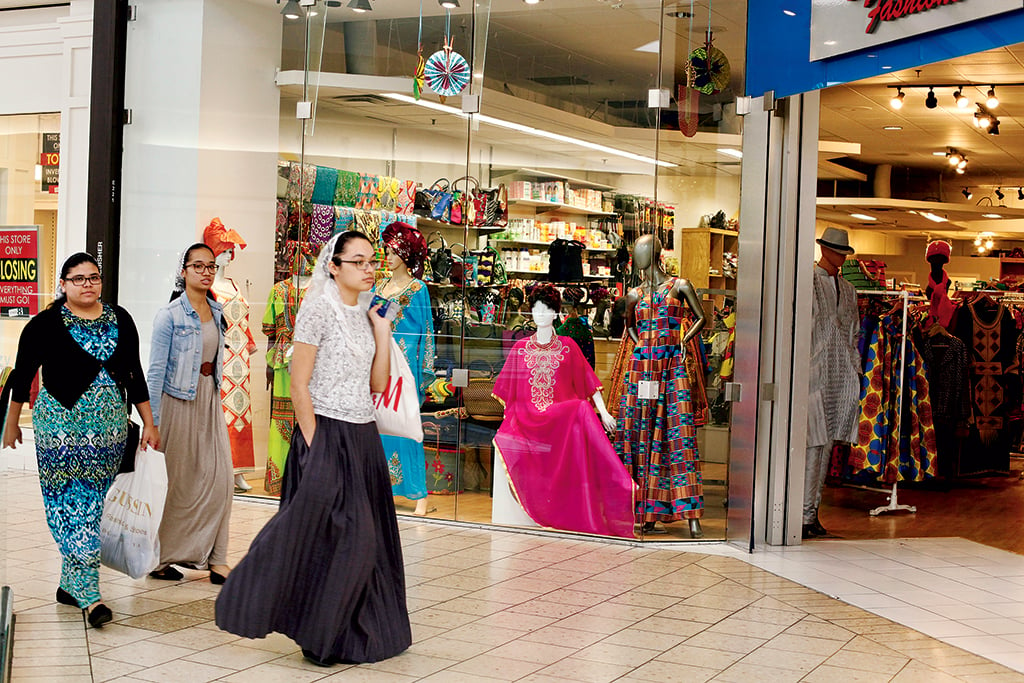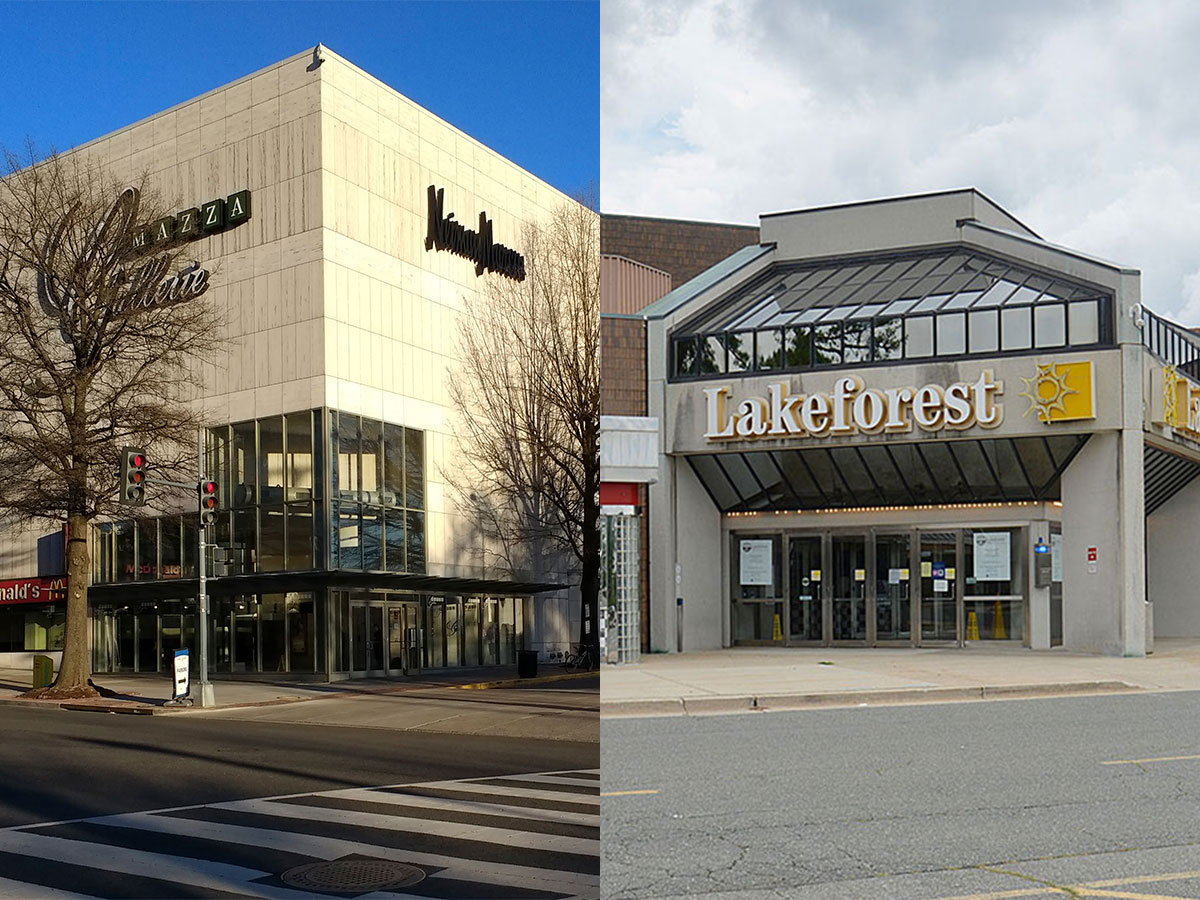Every year on Black Friday, I get up around 9, eat a nice breakfast, and spend the rest of the morning enjoying the company of friends and family. Then in the afternoon, after the crowds have thinned a bit, I drive to Tysons Corner Center for some prime people-watching.
Last year, the tradition came with a twist. I spent my afternoon not inside the climate-controlled shopping mall lined with chain stores but relaxing in a lovely plaza outside the main building. Kids tumbled down slides on a playground while shoppers lined up for burgers at the adjacent Shake Shack. The scene felt more like a day at a hip urban park.
You may have heard that malls are dying. Department stores such as JCPenney and Macy’s are struggling, teens are turning away from trendy clothing chains such as Forever 21 and Abercrombie & Fitch, and customers are shopping online rather than trekking to J. Crew. Several longtime Washington-area malls, including North Bethesda’s White Flint, Southwest DC’s Waterside, and Alexandria’s Landmark are now gone.
But the reality is more complicated. As we head into this year’s prime buying season, many malls are actually doing well, often after transforming themselves in unexpected ways. Rather than continuing to offer near-identical stores and unappetizing food courts, these destinations are rethinking what a mall can be.
In some ways, this is a return to the mall’s original concept. Austrian architect Victor Gruen, credited as inventor of the idea, envisioned it as a suburban upgrade to an urban downtown—a social hub as much as a commercial one. In New Jersey, one of the country’s earliest examples, Bergen Mall, included features such as an ice rink, a bowling alley, and a live-production theater. Developer James Rouse—who in the 1950s built the first indoor mall in Maryland, Glen Burnie’s Harundale—thought of it as Main Street with a roof: He originally named it HASS, for “heated, air-conditioned shopping street.”
But as more malls rose around the US—numbering 13,000 by 1970—their focus shifted to pure commerce. That often made them quite profitable but also left them susceptible to shoppers’ changing habits. Mall construction slowed dramatically in the late 1980s, thanks to recession and overbuilding. Later, as customers shifted toward big-box stores like Target and Walmart and then to Amazon and other online outlets, indoor shopping centers started to seem inconvenient and old-fashioned. Who wanted to navigate a four-level parking garage when you could buy socks from your bed? A 2012 report found that 17 of the area’s 42 enclosed malls had shuttered.
Today, many of the malls that remain are trying to find new ways to adapt, giving shoppers more reasons to visit and cooking up experiences unavailable online. That might mean relatively minor improvements, such as Springfield Town Center’s introduction of a weekly farmers market. Or it could be a wholesale transformation, as at Gaithersburg’s Lakeforest Mall, which has ditched American Eagle Outfitters and Cinnabon in favor of businesses serving Montgomery County’s growing immigrant communities. It now offers African and Middle Eastern clothing stores, a Nepalese-style curry place, and a Himalayan gift shop. Lakeforest’s annual Chinese New Year celebration—a two-week festival that includes live entertainment and art exhibits—has also become a big draw since it debuted in 1997.
The Mall in Columbia is likewise benefiting from community-building. It sold adjacent land to a developer, which has constructed three high-end apartment buildings with ground-floor stores—creating a street-level shopping corridor and outdoor gathering places for hundreds of built-in customers. It’s part of a broader effort to provide Columbia with the kind of downtown it’s never had. Other Maryland malls are considering similar concepts.
The area’s most dramatic reboot could be Arlington’s Ballston Common Mall, which is set to reveal its radical transformation next year. Developers are tearing down several walls to create something far more contemporary: a mix of high-end boutiques and Instagram-worthy restaurants that open onto an inviting plaza with grass and sculptural wooden seating. It promises to be a model take on the contemporary retail experience, with sunlight and fresh air replacing the hermetic, disorienting atmosphere of those old indoor behemoths.
Ironically, the concept isn’t far from how some of the region’s earliest shopping centers, such as Wheaton Plaza, started almost 60 years ago—as open-air courtyards surrounded by stores. Maybe shopping-center designers had the right idea from the start. It just took them a while to realize it.
This article appears in the December 2017 issue of Washingtonian.



















